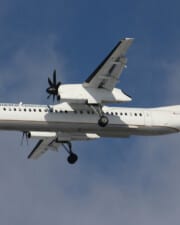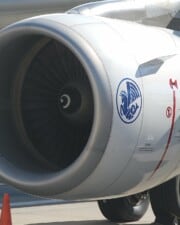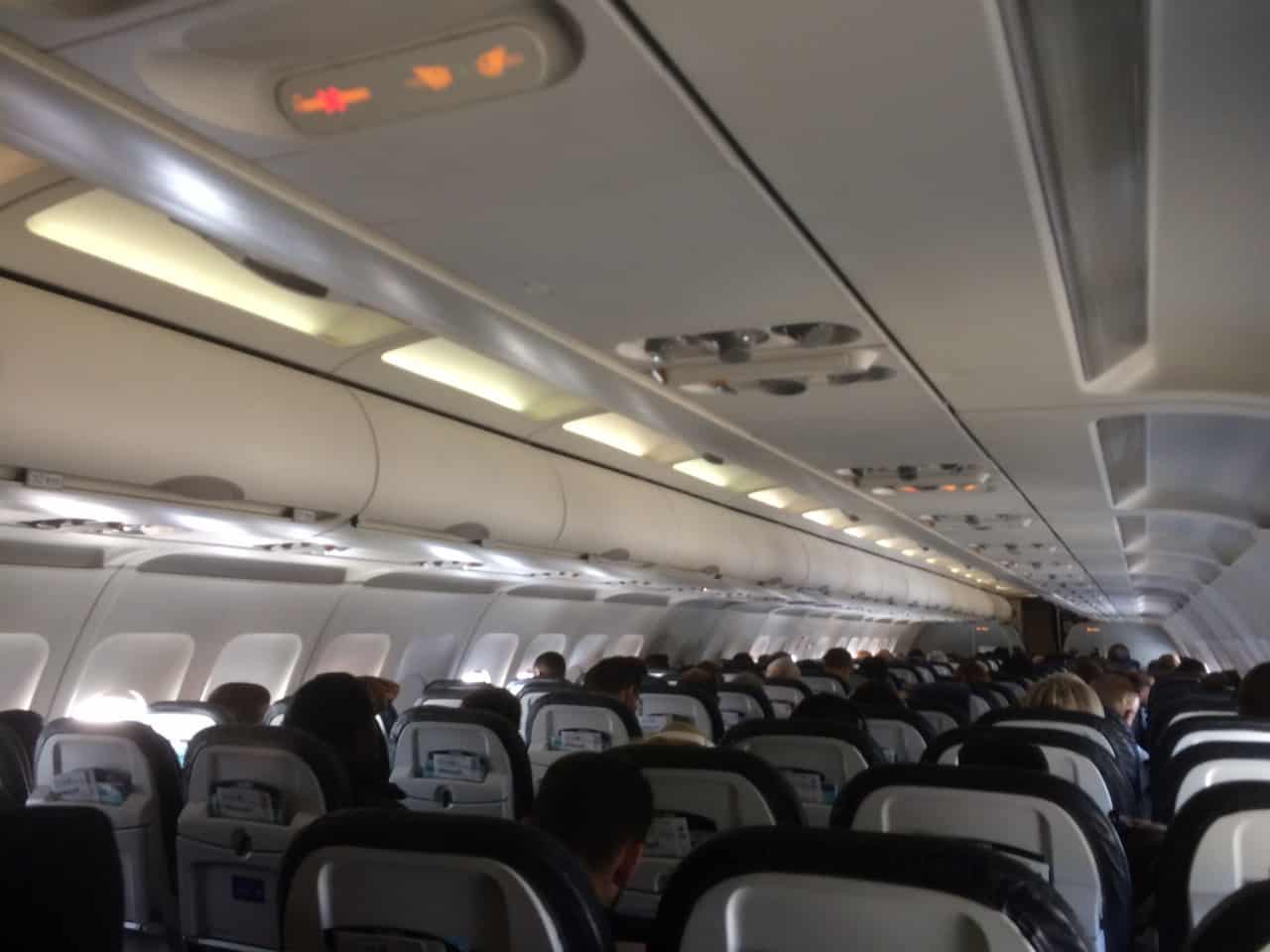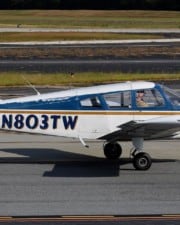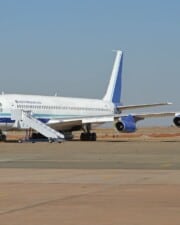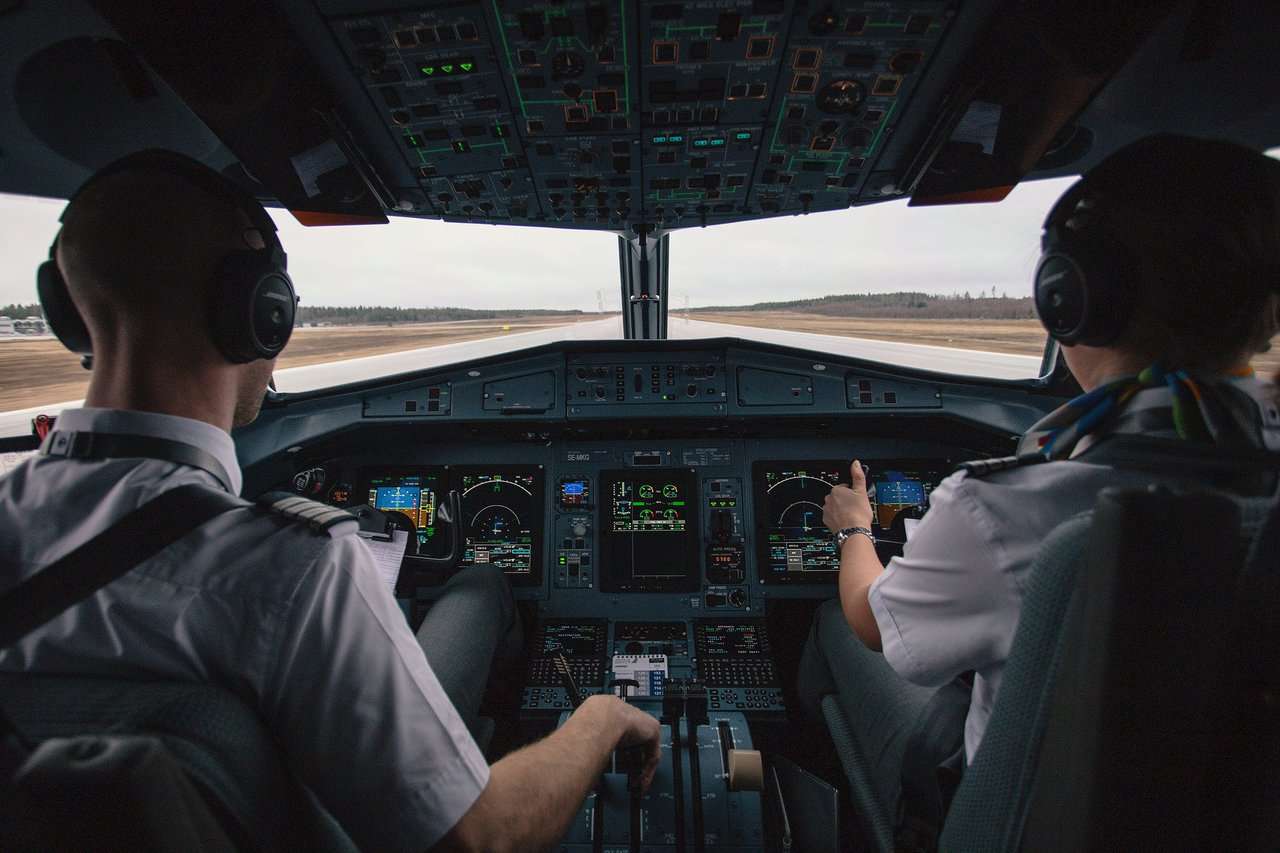Aircraft such as the Boeing 747 and 737 are still on the books of airlines around the world for regular operation despite being built in the 1970s. This seems like a long time and would naturally lead you to wonder how many years a plane lasts.
Table of Contents
Commercial, military, and cargo aircraft are designed to be in the skies carrying passengers, freight, or weapons of war for decades. Aircraft, unlike cars, are designed to withstand a certain number of pressurization cycles and not years in operation.
This is because aircraft are put under physical stress by the pressurization that comes with taking off, climbing to altitude, and landing again, which takes its toll on the fuselage and wings of planes, whether that be civilian or military aircraft.
While aircraft are designed to fly for many years, all planes must be retired at some point. What happens to old and retired aircraft once they are no longer fit for regular operation, and can you use an aircraft for regular operation past its recommended pressurization life cycle?
Why do Aircraft Need to be Retired After a Certain Amount of Time?
Aircraft are manufactured to be operable on a day-to-day basis for decades and can withstand thousands of take-offs and landings as long as the aircraft is maintained and used properly.
Civilian, military, and cargo aircraft undergo severe stresses on their fuselages when taking off and landing due to constant pressurization, and as such, they need to retire from their day-to-day operating schedules when the aircraft’s age starts to show on the fuselage.

The age of an aircraft is not measured in years but in pressurization cycles instead. Pressurization occurs every time an aircraft ascends or descends and is done to make the flight experience for passengers and crew members more comfortable.
These pressurization cycles cause the fuselage of the aircraft to contract and expand, sort of like the lungs in a human body, which puts the aircraft’s rivets and fasteners under a lot of pressure, causing metal fatigue.
Metal fatigue can cause cracks around these rivets and fasteners, which could lead to the plane’s fuselage becoming compromised and unable to withstand pressurization.
What Happens to Retired Aircraft?
Older aircraft can often be used for different purposes and don’t necessarily need to be grounded indefinitely.
Museums, institutions, and even the hospitality industry (restaurants, hotels, and resorts) can all provide a new home for retired aircraft and could even carry on using the aircraft for flying purposes to a limited degree.
Retired aircraft are also commonly stripped for their parts, especially computers, circuit boards, and TV screens, giving retired aircraft a new lease on newer planes in the form of spare parts.
If an aircraft cannot find a new home somewhere else or is completely stripped of its most valuable parts, it gets sent to an aircraft graveyard, either temporarily or permanently.
There are many aircraft graveyards across the United States, especially in the dry and arid states such as Texas, New Mexico, Arizona, and California, where planes could be stored for decades.
The largest aircraft graveyard is the 209th Aerospace Maintenance and Regeneration Group (AMARG for short) at the Davis-Monthan Air Force Base near Tucson, Arizona. AMARG covers an area of over 2,600 acres (1,052 ha) and is home to over 4,400 aircraft totaling some $32 billion in combined value.
AMARG is home to all the US government’s retired aircraft and several civilian and military aircraft and is kept in storage for parts.
AMARG’s location in the dry and scorching Arizona desert means that its planes can stay in storage for years rust-free, making the facility a popular final stop for retired aircraft.
How Long Do Commercial Aircraft Last?
The life cycle of commercial planes is determined by the aircraft’s manufacturer.
Companies like Boeing and Airbus calculate how many pressurization cycles their aircraft models are designed to withstand with proper maintenance and pass it on to airlines and companies purchasing their aircraft.
The owner of the aircraft is not obligated to retire the aircraft at the end of the recommended life cycle and can operate the aircraft longer if it still meets the minimum safety requirements and is regularly maintained.

The average age of commercial aircraft on the books of airlines around the world is currently 13, however, there are Boeing 747s in operation in certain parts of the world that are 30 years old and older, despite being designed to be operational for 27 years.
While the 747 was designed to last almost three decades, not all aircraft were designed the same. Take the Lockheed TriStar, for example, which was designed to barely last for two decades if properly maintained.
Placing an aircraft on retirement is not a cheap decision for an airliner to make, as the cost to store a large jumbo jet ranges from five to six figures.
To offset these costs, most airlines in the United States and Europe decide to sell their aging aircraft before they reach their expiration date to smaller airlines for a fraction of the price that a new aircraft would cost.
How Long do Military Aircraft Last?
Military aircraft, unlike commercial aircraft, are rarely resold to other nations when they become too old to keep in the force (though that doesn’t always mean they aren’t as seen in recent years).
Instead, most military aircraft end up retiring on graveyards such as AMARG, where they are stored and slowly stripped for parts over time.
Airplanes are expensive, and as such, old and retired military aircraft are an excellent source of spare parts for countries around the world wishing to save a couple of millions from their annual maintenance budget.
Some military aircraft are lucky enough to be donated to museums or used as movie props, which might give them a new lease away from combat duty.
In extreme scenarios, retired military aircraft might be restored and retrofitted to be reintroduced into active duty when an emergency occurs, such as a war with another country.
This had happened several times throughout history, most notably during World War II, when aircraft from WWI were used by both the Allied Forces and Germany.
Military aircraft are also regularly repurposed to fulfill other service duties. In the United States, for example, the military often sends some of their older reconnaissance aircraft and helicopters to the National Guard and Coast Guard.
How Long Do Cargo Aircraft Last?
Cargo aircraft can be retired and repurposed for all sorts of roles.
The US military loves to pick up cargo aircraft to convert into reconnaissance planes and aerial refueling planes, such as the Airbus A330 and C-130 Hercules, which are/were part of militaries and cargo carriers around the world.
Cargo aircraft themselves are often old commercial aircraft repurposed to haul cargo instead of passengers, saving airlines with cargo fleets from purchasing new planes to carry freight.
Therefore, companies such as FedEx, DHL, and UPS all operate a fleet of aircraft that are, on average, older than 20 years.
The reason cargo carriers can get away with operating older aircraft than commercial airlines is the pattern of use of most cargo planes. Where commercial airlines use their aircraft every day, sometimes multiple times per day, cargo planes are not flown as regularly.
Cargo aircraft are usually used for long-haul, intercontinental flights and not the short-haul flights that most airlines operate, which places significantly less stress on the aircraft’s fuselage and enables the plane to be operated much longer than commercial aircraft.
While many commercial aircraft find their way to cargo carriers during their life cycle, at the end of the day, cargo planes must also be retired at some point and are not spared from the graveyard either.
Just like most military and commercial aircraft, cargo planes are given the “mothball” treatment and placed in storage or stripped bare for parts such as engine components or electronics.
While some cargo planes might get picked up by humanitarian organizations such as the UN for leasing or get converted by the military, most will end up in graveyards or recycled to produce everyday items such as soda cans, furniture, and plastics.
How Long is The Average Life Cycle of an Aircraft?
The length of time an aircraft is designed to be operated under normal, intended conditions is determined by the aircraft’s manufacturer. The life cycle depends on the aircraft itself and whether the correct maintenance procedures were followed by the aircraft’s owner.
The average life cycle of an aircraft can range from a decade to as much as 30 or 40 years, depending on the number of pressurization cycles the aircraft has gone through.
It is entirely possible for Delta or United Airlines to have a 40-year-old Boeing 747 on their fleet that’s still not past its manufacturer’s life cycle. This is because manufacturers design aircraft to be operational for a certain amount of pressurization cycles, not a set number of years like cars.
All aircraft, civilian or military, are designed to be operable for multiple decades if taken care of. The only reason we don’t see aircraft from the 1960s still in regular operation is that after the manufacturer’s recommended life cycle, it simply becomes too expensive to maintain the aircraft properly.
Just as older cars are more expensive to maintain and break down more regularly, older aircraft need regular upkeep and maintenance to stay in full-time operation, eventually costing more to maintain than it would be to purchase a new aircraft.
Related Posts


